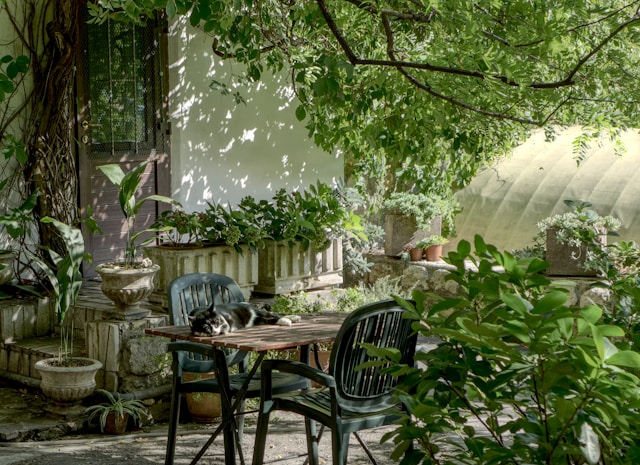The many great gardens of the world,
of literature and poetry, of painting and music, of religion and architecture,
all make the point as clear as possible:
The soul cannot thrive in the absence of a garden.
If you don’t want paradise, you are not human;
and if you are not human, you don’t have a soul.
~ Thomas Moore
In all the modern day mentioning of gardens, we hear the words sustainable and organic ringing in our hearts and minds. Some of the things that has led to this movement is the strong evidence that factory farming has become a dangerous method in which to feed the populations. Now with outbreaks of illness and even death from contaminated vegetables, fruits and eggs, we take caution to things like salmonella and listeria. But it’s not just a matter of human health that raises our concerns, but it’s the harmful effects factory farming is having on our environment as well.
We are then left faced with extremely high food costs for purchases of quality organic products. For a vast majority of the human populations the price of food consumes most of their incomes. Logic tells us we must eat for better health, especially when most Americans are left without medical coverage. Even those with insurance are faced with astronomical premiums that they cannot afford to pay.
Last but not least is the day in and day out human rat race to survive, with efforts to get ahead somehow. It’s a very stressful world today and one that must find a way to slow down to seek a more peaceful existence. Many of us have found that sustainability includes spiritualism as part of our well being. For many who garden have found that the very essence of the soul can be touched by the hand of God with time spent in the quietness of ones garden. For after all, I believe it was a garden called Eden that God first placed man with a soul. A very special garden that contained everything to sustain man, including a safe refuge and sanctuary.
By taking a closer look into the life of a Monastery and going back in time to the way of life for a Monk during the Medieval days when it was totally necessary for survival we shall find the most glorious and harmonious gardens of all time. We can learn much from their purpose in growing and creating their gardens. The Monks typically grew three different gardens. The Herb Garden, which provided medicines and the orchard and the kitchen garden that provided food. Of particular interest is the fact that historically the herb gardens also contained many small trees, fruit and berries as well. The trees were strategically placed in and around the herb garden creating a special and private place.
I’ve found more purpose to growing fruits and berries with the herb garden because the herbs benefit many varieties by deterring harmful insects and pests. In some cases the herbs actually enhance the growth and flavors of some fruits and berries. I’ve included strawberries throughout my herb garden, neighboring them with Thyme and Borage. Both are excellent companions to strawberries. Grapes trail along fences growing with Rosemary, Horseradish and Hyssop.
We have been slowly adding more fruit trees in and around the herb garden as well. For the Southern garden some choices that we have made that work very well are Pomegranate trees, which happen to be evergreen here and can be grown as a shrub or pruned as a tree. Also Fig and Peach Trees work very well. We’ve added Pineapple Guava trees, which are also evergreen and several thorn-less varieties of Blackberries that are suited to our area. We have also included a few Lemon Eucalyptus trees, but chose an area further out from the herb garden for them because they can get quite tall and tend to be brittle and drop branches. Citrus trees of various varieties grow well in the south or can be grown in containers. Dwarf varieties can be placed directly throughout the herb garden, but must be protected during the winter months.
Of course it is essential to include color throughout the herb garden. While many herbs provide spectacular color within themselves, even greater pleasure can be found by including natives and wildflowers. Antique Roses also find their place in the herb garden both historically and today. The important thing is to have fun and find your solitude while creating your Herbal Sanctuary. Be sure to include water features, that were used by the Monks as well. Many Monasteries included small ponds stocked with fish for food as well as tranquility. Fall is the perfect time to prepare your Herb Garden for a beautiful spring bounty of beauty. Happy Gardening!
- Wild Dagga Motherwort Medicinal Herb - November 11, 2013
- Grow The Best Organic Lettuce - November 4, 2013
- Amish Hot Pepper Mustard - October 23, 2013
